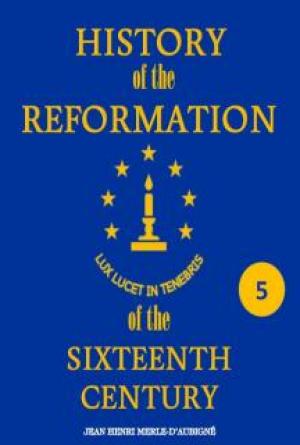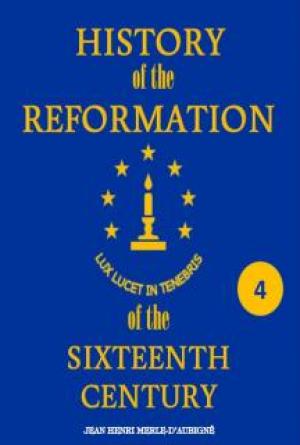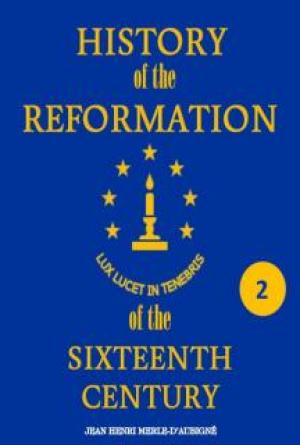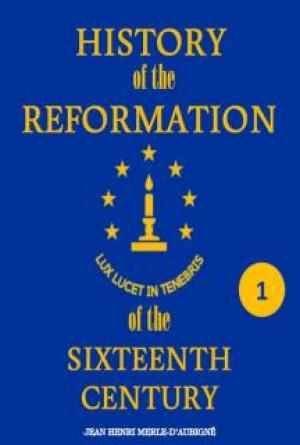FOOTNOTES:
[1] Their passport is, in the Fœdera, dated January 11. 1412.
[2] Morery, in his list of chancellors, places Arnauld de Corbie, lord of Joigny, from 1409 to 1413, and makes Henry de Marle, lord of Versigny, his successor in the latter year.—See post, where it is said, that sir Reginald (i.e. sir Arnauld) de Corbie was displaced (1413), and Eustace de Lactre appointed in his place.
[3] Guy de Nesle, vol. ii. p. 228.
[4] Renty was the name of a considerable family in Artois. I can find nothing about any of the others.
[5] Humbert, natural son of Amadeus VII. and brother of Amadeus VIII. counts of Savoy.
[6] John de Châlon, second son to Louis I. count of Auxerre, and brother to Louis II.
[7] Q. Dixmuyde?
[8] See this letter, and the treaty with the duke of Berry, &c. in Rymer, A.D. 1412.
[9] Q. Ardres?
[10] Louis II. de Châlon, count of Auxerre, son of Louis I. and Mary of Parthenay.
[11] Charles d'Artois, count of Eu, son to the constable d'Eu (who died in Turkey 1397) and to Mary daughter of the duke of Berry. He married twice, but had no issue, and in him ended the royal branch of Artois, commencing in Robert the good count d'Artois, who was killed in Egypt in the year 1250, when accompanying his brother St Louis.
[12] Sir John de Neele in the original, and so before. Was sir J. de Neele lord of Ollehaing? It appears so from p. 156.
[13] Second son of the king.
[14] Monstrelet has forgotten Philippa of Lancaster, Henry's younger daughter, married to Eric king of Denmark, and died without issue. His elder daughter outliving the duke of Bavaria, and her second husband the king of Arragon, was married to the duke of Bar, but had no issue by any of them.
[15] See the original treaty in the Fœdera. It is dated the 18th of May, and not the 8th as in Monstrelet.
[16] Bona, eldest daughter of the constable d'Armagnac, afterwards married to Charles duke of Orleans.
[17] Called before 'Mouberon;' but Montberon is right. James, son of Imbert lord of Montberon in Angoumois, was made mareschal of France in 1422, in the place of John de Villiers de l'Isle-Adam.
[18] Guy VIII. lord of la Rochefoucault, was one of the first lords of Guienne who did homage to the crown of France after the peace of Bretigny. Froissart mentions a duel which took place in 1380 between this nobleman and William lord of Montferrand, at which he was attended by two hundred gentlemen of his own family. He married Margaret de Craon, lady of Marsillac and Montbazon, by whom he had two sons, Foulcault III. lord of la Rochefoucault, mentioned hereafter, and Aymar lord of Montbazon and Sainte Maure.
[19] Called 'Allaigre' in the original. Alegre is the name of a noble and ancient family of Auvergue.
[20] Called 'Ernault' a little after, which agrees with Moreri's Arnold.—See ante, p. 14, note.
[21] In Moreri's list, Henry de Marle succeeds Arnauld de Corbie in 1413, and is succeeded by Eustache de Laitre in 1418.
[22] The name of the city of Amiens is inserted in this and in most of the former state-papers merely by way of example. It was probably the nearest bailiwick to Monstrelet's place of residence, and the edicts, &c. which he inspected were those directed to this particular bailiff.
[23] There was clearly no such person as the duke d'Evreux; but the earl of Rutland himself was also duke of Aumerle; and, both being norman titles, Monstrelet might have confounded them. But I can find no mention of an embassy in which the earl of Rutland was concerned.
[24] Monstrelet must have mistaken the names of these ambassadors; for in the Fœdera mention is made of a promise from the king of England, by his commissioners, the bishop of Durham, the earl of Warwick and doctor Ware[25], 'De non contrahendo, citra certum diem, cum aliqua alia muliere, nisi cum Katerina Franciæ, matrimonio.'—Dated Westminster, 28th January 1414.
[25] This, however, seems to refer to the second embassy mentioned after.
[26] St Mor. Q. St Maur?
[27] At the head of this chapter, in the edition of Monstrelet in Lincoln's-inn Library, (which is the black letter of Anthoine Verard,—I can find no date), is a curious wooden print, representing, perhaps, the duke of Burgundy and his lords in council; but I do not understand what the figures of dead bodies in the back ground are meant for.
I should suspect that the print is misplaced, and is meant to describe the bloody entry of the duke into Paris some time after.
[28] D'Oyrront. Q. D'Orgemont?
[29] James de Bourbon, grand butler of France, son to James I. count de la Marche, and uncle to the present counts de la Marche and Vendôme, and lord of Carency.
[30] Mondidier,—a town in Picardy, nine leagues from Amiens, twenty-three from Paris.
[31] Esclusieu,—a village in Picardy, near Peronne.
[32] December. So in the original, but it must be a mistake.
[33] Baron,—a town in Picardy, diocese of Sens.
[34] Dampmartin,—a town in the isle of France, nine leagues from Paris.
[35] Count of Soissons, mentioned above.
[36] Arriere-ban,—'a proclamation, whereby those that hold of the king by a mesne tenure are summoned to assemble and serve him in his wars,—different from ban, whereby such are called as hold immediately of him,—also the whole troop of those mesne tenants or under vassals so assembled.'
Cotgrave's Dict.—See 'Ban' and 'Arriere-ban.'
[37] There is the most extraordinary confusion of dates throughout these state-papers, which it is, probably, utterly impossible to rectify by any conjectural emendations: but it seems right to take some notice of the circumstance, as at first sight it appears a most culpable oversight. It is not only here but throughout the book that this confusion prevails, as is very evident from the challenges of the arragonian esquire in the beginning of the volume.
END OF THE THIRD VOLUME.







